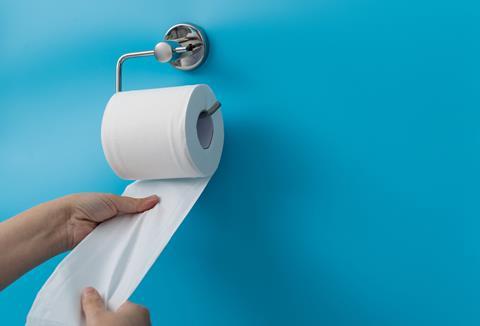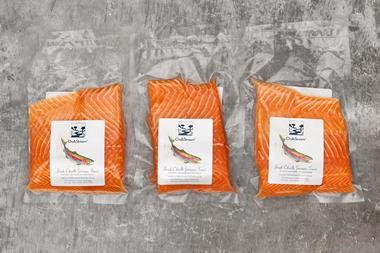
Over the past week, all eyes have been on the bamboo toilet paper industry.
That attention is courtesy of a shocking Which? article, which claimed 60% of brands contain more tree fibre than bamboo. We are pleased The Cheeky Panda is one of the two brands tested to be 100% bamboo. However, with two brands admitting faults in their supply chain and one company disputing the test results, consumers find themselves bamboozled about what to believe and the eco-conscious choices to make.
While the findings are hugely disappointing, they have at least initiated a dialogue and spurred a call for greater transparency – whether that’s toilet paper made from bamboo, virgin tree fibre or recycled paper. This dialogue will undoubtedly pave the way for consumers to make more informed choices in the future. We live in a world of stretched resources and a growing global population, and in the UK alone, the retail paper sector is worth £2bn. Globally, that figure stands at over £50bn.
One of the reasons why we were the first company to use 100% bamboo as an alternative to tree fibre was to disrupt the category. Continuing to do things the same way we’ve always done and saying it is sustainable, when over one million trees a day are cut down for toilet paper, isn’t the answer.
Drawing on eight years of industrial manufacturing experience, I am committed to shedding light on the complex reality of toilet paper production. Often, people enquire about the origin of toilet paper manufacturing. Contrary to popular belief, proximity – such as manufacturing in the UK or EU – doesn’t necessarily equate to heightened sustainability, even when renewable energy is utilised.
This is because the factories responsible for producing the finished goods typically handle final cutting and packaging, accounting for only 10-20% of the carbon in the entire supply chain. The majority of carbon emissions occur before the converting stage, from farmers harvesting raw materials to turning them into paper pulp, a process that often takes place overseas. Meanwhile, the impact of global transportation typically constitutes less than 15% of the entire supply chain footprint.
Although recycled pulp can be collected and produced into paper in the UK, high-quality recycled pulp remains scarce and is not a scalable solution. Furthermore, the production of recycled toilet paper often involves an intensive de-inking process, which may result in the presence of persistent chemicals like BPA or PFAS in the finished products.
The carbon footprint incurred during the production process of bamboo, virgin tree, and recycled options is actually very similar. However, the crucial differences lie in the pre-production phase.
Paper from trees and recycled toilet paper lacks the inherent planetary benefit of bamboo. Harvesting bamboo promotes the regeneration of new shoots from its own root system. With its remarkable growth rate of up to 90 centimetres per day, regularly harvested bamboo serves as a significant “carbon sink,” effectively removing carbon from the atmosphere. The fastest-growing trees, meanwhile, take at least 12 to 14 years to grow.
Consider recent reports that, due to the clearing and drying of peatlands, Finland’s land use sector has changed from being a carbon sink to being a net source of emissions. The country is now facing a €7bn EU fine over deforestation.
We need a resource that self-regenerates, absorbs more carbon, releases more oxygen, uses less land, water, and fertiliser, and enriches soil. Bamboo serves as an ideal solution.
Read more:
-
How M&S is innovating its way to net zero
-
How businesses can solve the big carbon conundrum
-
Tesco joins grocery giants offering funds for sustainability startups
-
Domino’s publishes first ever sustainability report and nutritional targets
Creating a truly sustainable business is not as simple as affixing a label on a box and selling it on Shopify sites. Entrepreneurs entering this market without supply chain knowledge and a lack of quality control can set back efforts by several years. Furthermore, businesses that claim to be ‘the most sustainable toilet paper in the UK’ or ‘50% fewer carbon emissions than other eco-tissues’ without real competitor data to substantiate those claims only contribute to the problem.
Even when it comes to on-pack accreditations from third parties, it’s important to understand what they mean. For example, although the Forest Stewardship Council (FSC) ensures bamboo toilet paper products are sourced sustainably, it does not guarantee 100% bamboo content, as FSC does not conduct fibre testing. Wood pulp might still be mixed into bamboo toilet paper at some point in the supply chain if proper quality control measures are not in place.
As brands continue to push boundaries and innovate, it’s essential to remember that their ultimate goal is to make a positive impact on the planet. Whether new start ups or established businesses, we must work together and support one another. We need to treat consumers with respect and provide correct information. The industry needs to do better, and entrepreneurs need to do better, so we can positively contribute to a better world.
The big lesson we can take is that sustainability is still a journey, and brands need to be even more transparent about their entire supply chain, use the most sustainable materials possible, and improve their carbon footprint over time through technological and logistical efficiency.



















No comments yet